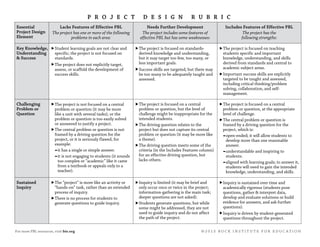The document is a rubric for evaluating project design elements in project-based learning. It evaluates elements like key knowledge and skills, the central problem or question, sustained inquiry, authenticity, student voice and choice, reflection, critique and revision, and public products. For each element, it describes the characteristics of a project that lacks effective features, needs further development, or includes effective features of PBL.

